Stone is the material that has most influenced the humanization of the landscape of the Canary Islands. Stone constructions are part of a large number of elements that make up the identity of the islands: royal roads, walls for crop farms, washing stones, distilleries for the water basins, stone mills, drinking troughs for animals, architecture of all kinds and much more. In this article we will talk about Canarian stone and traditional stonework and how it has influenced the heritage of the Archipelago.
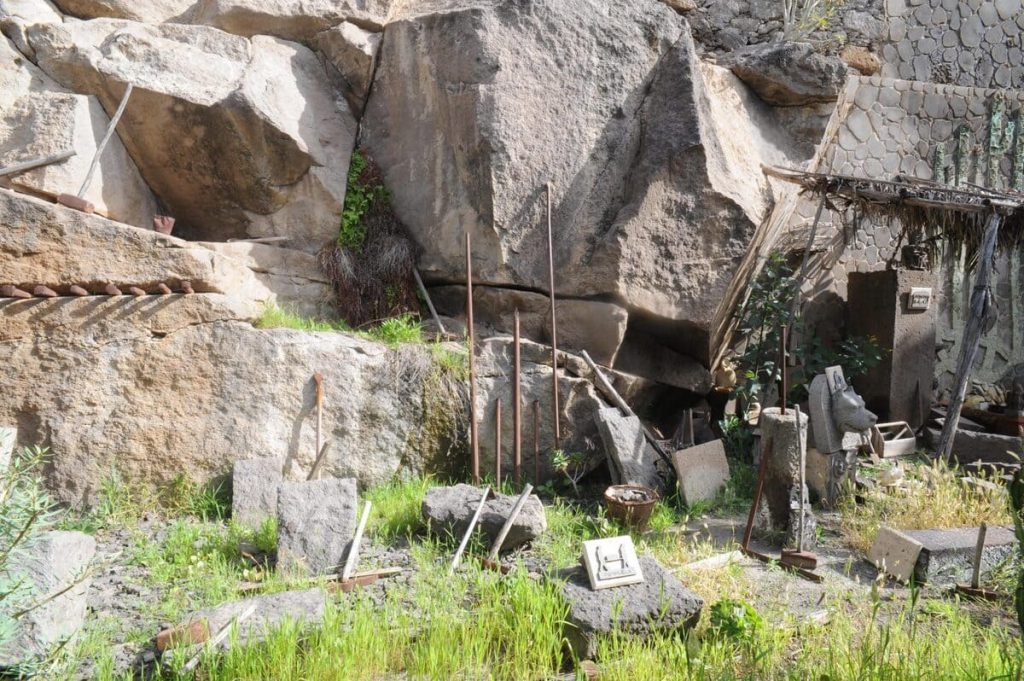
History of Canary stone and traditional stonework
Stonemasonry is the art of carving stone to be used in the construction of buildings, facades and masonry. In this discipline, the craftsmen signed their work with marks known among them and which also appeared engraved on their tools. They were usually very simple marks: stripes, dots, crosses and sometimes we can see the initial letter of the surname.
As for its history, due to its volcanic origin, the archipelago is rich in various stones that can be used for stone masonry. Since the time of the first settlers, they were already working the Canary stone. As a witness to this, there are numerous remains of aboriginal settlements built in stone, such as the houses of the Cueva Pintada de Gáldar settlement.
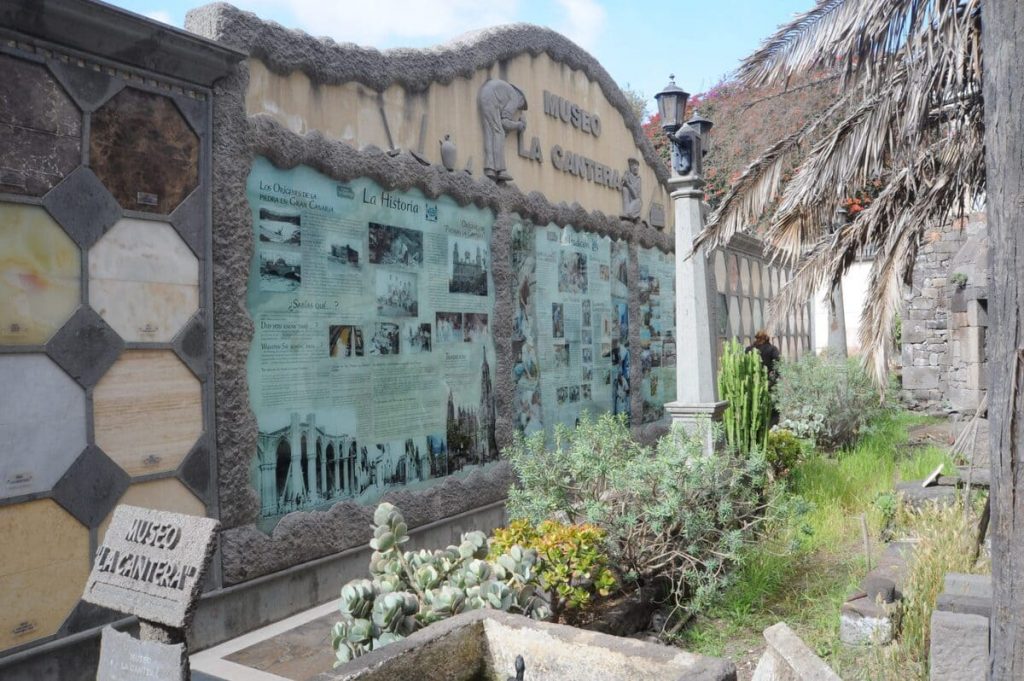
After the Conquest, the exploitation of the quarries intensified, giving rise to the popular, stately and religious architecture of the islands. The work of the stonemasons was in great demand during periods of great construction dynamism. At the beginning of the 20th century, more than a thousand stonemasons worked in the quarry of La Goleta, located in Arucas.
Canary stone: how to work it?
Tools used
This work has remained almost unchanged over the centuries, hence the tools used still maintain the same format. With metal wedges, a brown and spades, the material is extracted from the cliff and the stone blocks are cut into pieces.
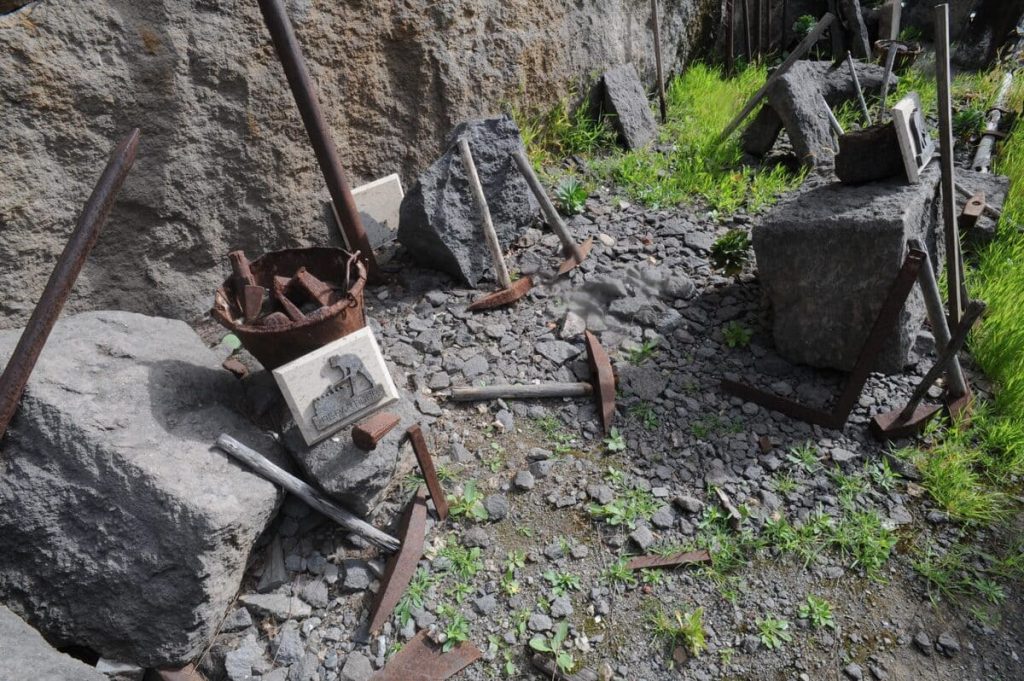
To give shape to the stone and to finish off with all kinds of figures, the pick, the bujarda, hammer, chisels or chisel are used. The master wall builders, specialists in the construction of Canary stone walls for farms and land, also require the plumb and level to ensure the straightness of their walls.
The modernization and introduction of machinery in quarries has caused the disappearance, in part, of quarrymen and workers.
Process and different stone works
There are stonemasonry professionals in almost all the islands. However, some of these traditional jobs have fallen into disuse, such as the master stonemason or "paredero", who specialized in building the walls surrounding the farms.
The work process of the stonemason is very hard and not without danger. Among the stonemasons there are several stages and specialties. The cabuquero is in charge of extracting the stone from the quarry. The dealer is the one who cuts the block. The notcher is in charge of shaping it. The carver takes over by sculpting the stone. Finally, in the case of artistic stonemasonry, the carver is the person who specializes in shaping figures in the stone.
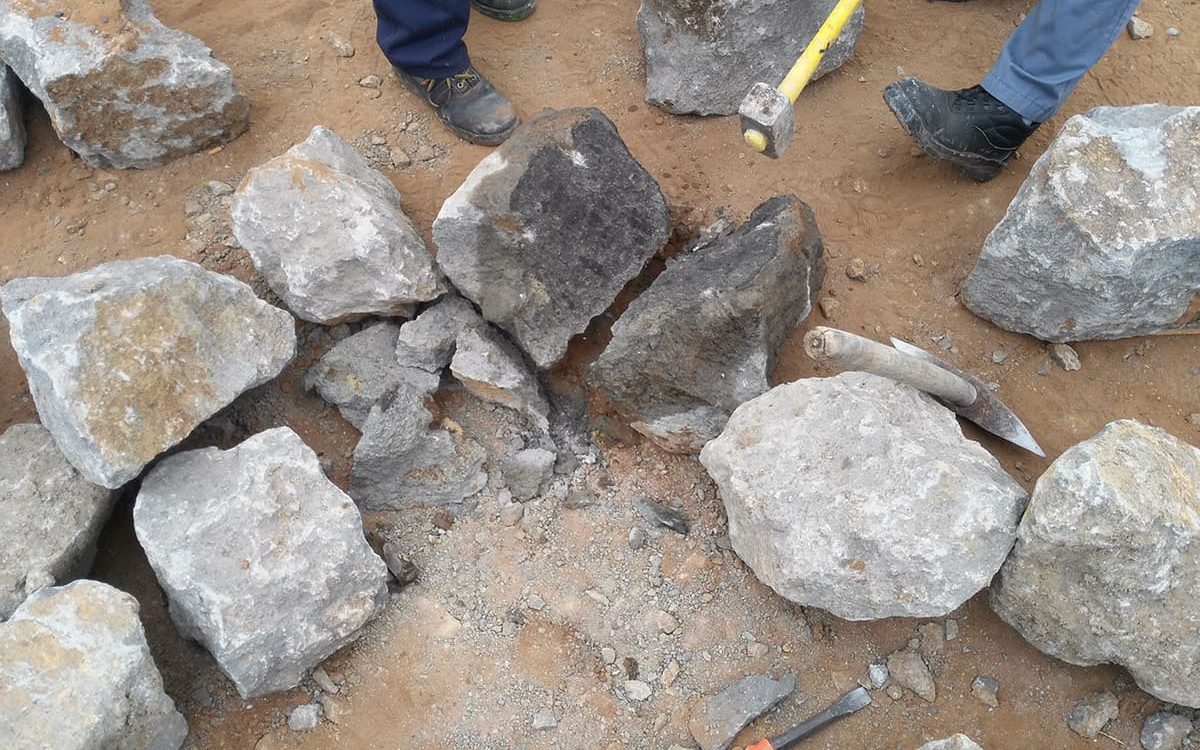
Among the stone works we can distinguish between those that have a construction purpose and those that create objects of more or less domestic use.
Raw materials used in quarrying
Actually, in this case we have to talk about the raw material in the singular, i.e. the stone, which varies according to its geological composition.
The most suitable to be worked are basalt, limestone and rough.
The different types of stone in the Canary Islands
In the Canary Islands there is a wide chromatic variety of stone, from that which can be found in the Red Stone Quarry of Tamadaba, the Green Stone Quarry of Tirma, the Ayagaures Quarry, the Ochre Stone Quarry of Teror, the brown stone of the Gáldar Quarry, the Blue Stone Quarry of Arucas, all of these in Gran Canaria. Also the Pink Stone of Tindaya in Fuerteventura, the yellow and porous stone of the south of Tenerife, the red pebbles typical of La Palma or the almost white ones extracted in the quarries of Tegueste, also in Tenerife.
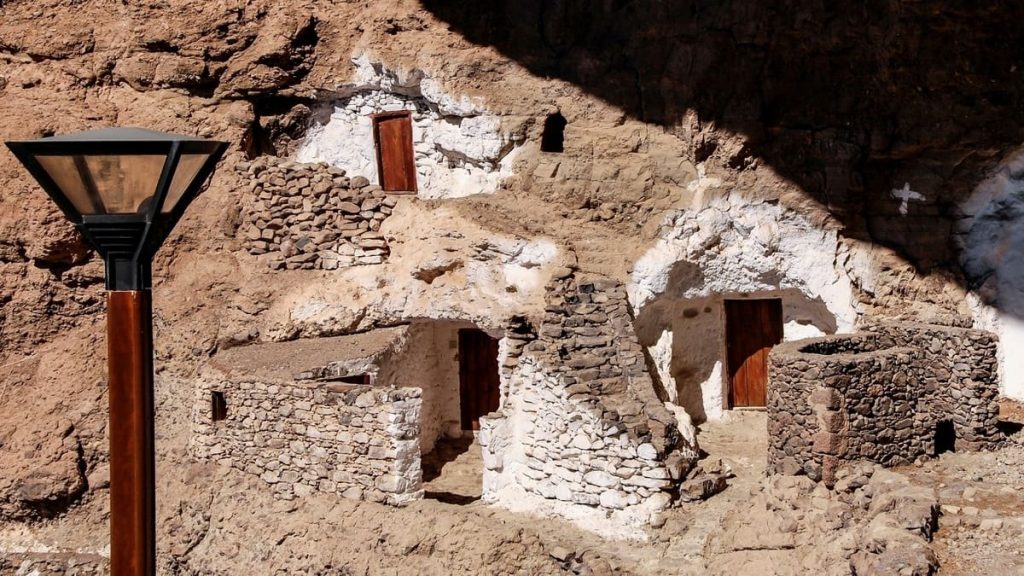
If you want to know more about the instruments and crafts of the Canary Islands, here are some links that may be of interest to you: The legacy of traditional Canarian ceramics; Timple, know the history of the Canarian instrument; The Canarian fretwork, insignia of the island craftsmanship.
Paula Vera
Photos: fedac.org, atlasruraldegrancanaria.com



